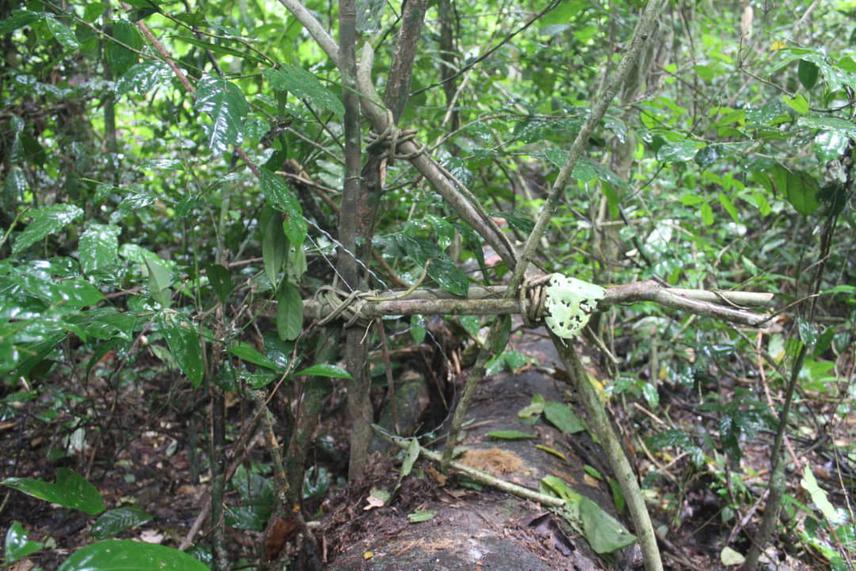Samuel Yao AFutor
This project aims to determine chimpanzee abundance and distribution and identify their hotspots for critical protection for the long-term survival of this subspecies in the Krokosua Hills Forest Reserve. The project will also engender community support for the conservation of the subspecies through stakeholder dialogues and conservation awareness campaigns.

Snare,
The global western chimpanzees (Pan troglodytes verus) population have dramatically declined by more than 80% over the past 24 years and it is currently classified as Critically Endangered on the IUCN Red List (Kuhl et al., 2017; Humle et al., 2016). The western chimpanzee (henceforth chimpanzee) is currently the most threatened subspecies of the four subspecies of the common chimpanzee in Africa. The subspecies is already extinct in Togo, Benin and Burkina Faso (Humle et al., 2016) and on the verge of extinction in Ghana if urgent conservation actions are not implemented to protect it. The subspecies population in Ghana represent the easternmost geographic population with potentially a unique genetic diversity which is critical to maintain for future viability of the subspecies in the region. In Ghana, the West Africa Chimpanzee Conservation Action Plan identifies Krokosua Hills Forest Reserve (KHFR) in southwestern Ghana as a priority site for immediate conservation attention to safeguard its chimpanzees’ population (Kormos et al., 2003). Preliminary chimpanzee surveys conducted in the KHFR in 2009 (Danquah et al., 2012) and 2015 (Tehoda et al., 2017) confirmed the existence of chimpanzees in the KHFR and suspected the reserve to habour one of the prime population of the subspecies in Ghana. However, the KHFR is experiencing serious pressure due to poaching, illegal logging and mining, wildfires and agricultural encroachment which threatens the long-term survival of the subspecies if pragmatic conservation actions are not urgently implemented.
Through this project, we will determine chimpanzee abundance and distribution and identify their hotspots for critical protection for the long-term survival of the subspecies. Additionally, the project will provide data on key threats to the subspecies which will help the management of the reserve to strategize their patrol and monitoring activities to mitigate threats to the chimpanzee population in the reserve.
Furthermore, we will engage fringe communities in conservation awareness campaigns to make them understand the ecological and economic importance of chimpanzees to help create attitudinal change in the minds of locals towards the subspecies and win their support to protect the subspecies’ habitats. The project will also build the capacity of volunteers in chimpanzee survey and conservation techniques and provide them with logistics to rally more local conservation support for the subspecies beyond the life span of the project. Stakeholder workshops will be organized among focal groups to collectively develop conservation actions needed to safeguard the subspecies.